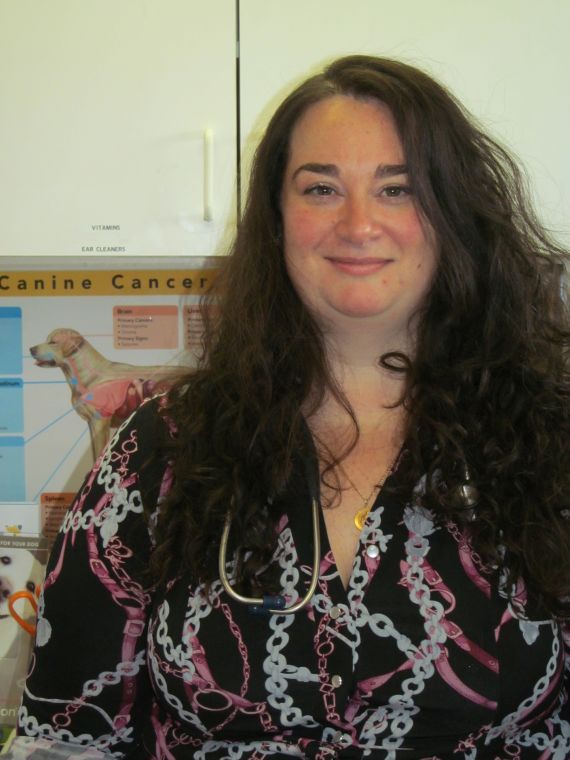A Garden City Park animal hospital is using a cutting edge technology intended to help people to cure their pets.
The Garden City Park Animal Hospital has been using stem cells to treat osteoarthritis and painful joint conditions for the past four years. In the past year, Dr. Jennifer Steiger, a veterinarian at the hospital, has begun using stem cells to treat other conditions, including torn ligaments and heart disease.
“We’re kind of on the precipice of a revolution with this,” Steiger said.
She said the American Veterinary Association has sanctioned stem cells in the treatment of osteoarthritis. But the AVA has recently permitted stem cell use for what is termed “compassionate use” to replenish cartilage in joints and renal disease. Steiger said it is also possible to use stem cells for treatment of heart disease and kidney failure.
“You can actually regenerate kidneys in kidney failure,” she said.
Steiger said the first compassionate use case she handled about a year ago was a mixed breed male dog named Rusty whose owners did not want her to implant a plate or wire to address a tear in the dog’s anterior cruciate ligament in one of its hinds legs. So, she said, she harvested stem cells from the animal, injected them into the affected area. In six months, Steiger said, the tear healed.
“That’s what got me started on thinking what else I could use this for,” Steiger said.
She said the Garden City Park Animal Hospital at 290 Denton Ave. in Garden City Park is collaborating with VetStem, a California-based company that purifies the stem cells after they are extracted from a particular animals fat cells. Seiger said she has completed certification for “compassionate use” stem-cell treatment.
Stem cells contain the basic building blocks of the cell structure in animals, as in humans, she said, making it possible to regenerate cells wherever the stem cells are injected.
“I’m one of the first to get on board with this approach to helping with osteoarthritis and helping other conditions,” Steiger said. “We’re doing the most stem cells on Long Island.”
She said she believes the Garden City Park hospital, where she has been in practice since 2008, is one of only two animal hospitals on Long Island to be using stem cells for compassionate use.
In a second case, Steiger said she treated an eight-year-old Rhodesian ridgeback named Rigley suffering from severe debilitating arthritis and heart disease. She injected the dog’s knees and hips and with stem cells.
Four months later, she said the arthritis was gone from the dog’s knees and its heart disease was in reversal.
She said she also had success in treating Shelby, a four-year-old pit bull, which had torn anterior cruciate ligaments in two joints. She operated on one joint and fixed the problem by injecting stem cells in the other joint.
“It’s kind of a blind faith procedure until you have evidence it works. It takes faith that those cells extracted from fat cells will regenerate and heal,” Steiger said.
Stem cell treatments for osteoarthritis in animals began over the past four years.
Steiger said she has successfully treated seven or eight animals with stem cells for the condition.
She said the age of an animal can be an inhibiting factor since the risk of administering an anaesthetic on a dog or cat – the only animals she treats – increases the older an animal gets.
Steiger said she now plans to harvest stem cells from young dogs and cats when their owners bring them to the hospital to be spayed or neutered. The stem cells from the young animals are in prime condition, she said, and can then be preserved and used at future points in the animal’s life when they might be needed.
The hospital would ship the cells to VetStem for preservation and storage, she said.
While there are limits to the use of the stem cells – collection for cancer is currently considered inadvisable – Steiger said there are a host of conditions that could be addressed as the technology is tested.



